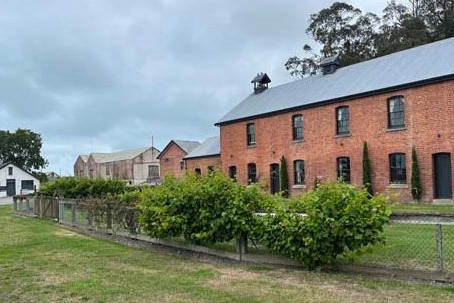Jackie Harrigan
A new concept in mixed forages is finding favour on dairy farms in Taranaki and Manawatu.
Growing chicory with annual clovers is providing a dry summer alternative to turnips that cows, farmers and seed reps are getting excited about.
Bruce Paterson, of Barenbrug based in the Rangitikei, was flat out in December, rushing up and down the North Island west coast checking farmers’ crops, advising on management, measuring forage and reminding them of the long-forgotten secret of clover production – N-fixing nodules growing on the annual clover plants.
“It’s nitrogen for free, and many farmers have forgotten that it’s a thing,” he laughs.
“In the past 15 years of dialing up the PKE and fert truck, farmers have treated legumes as the poor cousins as they have been shaded out by the grasses and forgotten about – now they are looking for a more natural way of doing things.”
Chicory is becoming a very cost-effective crop and is great to avoid the problems brassicas face like insect infestations. Chicory also has the advantage of having a tap root that withstands dry conditions. While the multi-graze forage has been in the crop rotation of many farmers for a while and performs well with regular yields of 10-12 tonnes drymatter (DM)/ha, the annual clovers adds a whole new dimension to the resilient and high-yeilding mixture.
Annual clovers have been around for hundreds of years, Paterson says, but have been largely developed and improved in Australia, with a dearth of good genetics making it across the Tasman.
But lately the tie up with Barenbrug and Heritage Seeds has meant a good pipeline of improved annual clover genetics.
“We have done trials on the chicory with perennial clovers and there is a little bit of data about that but this is just new and data will come soon.”
Trials at Poukawa in Hawke’s Bay have grown 10t DM/year from the prolific annual clovers and show they develop N nodules at a very young stage, Paterson says.
“I have dug up clovers at eight weeks and found lots of nodules – whereas the perennial clovers take six months to start showing nitrogen fixing capability.”
The annual clovers have high metabolisable energy (ME), high protein and high fibre with a hollow stem – which makes a great fit with low drymatter chicory. Annual clovers (including Persian and arrowleaf varieties) also have a tap root so drought resilience is high. Balansa clover varieties are suitable for wetter areas.
Paterson quotes data from Paul Muir at Poukawa that measured for every tonne of drymatter produced by the annual clovers, the plants will fix 25kg of nitrogen.
“Now that is pretty spectacular – farmers will side-dress chicory with 100kg of urea which is 50kg of nitrogen – but if the clovers are in there growing four tonnes of drymatter they are fixing 100kg of nitrogen – there are some real savings to be made there.
“I have had a lot of enquiry from dairy farmers in Manawatu and Taranaki and I think one of the big things is the environmental discussions going on and they are pretty excited about the concept of free naturally produced nitrogen.”
“I am not a soil scientist but I understand that the nitrogen is accumulative, once the crop is finished it will sit there and not leach out, so its available for the next crop – be it grass renewal or another crop.”
Farmers report the cows going into the crop and running around kicking up their feet like teenagers, and Bruce says the vets have remarked that the clover tickles their feet.
“I don’t know about the truth in that – but the cows do seem to run around and kick up their heels.”
Growth will slow during the dry summer but its stays alive thanks to the tap root and kicks into gear with the March rains – right about when the farmers need to be thinking about spraying it out and establishing new grasses, which makes it tricky, Bruce says.
“I am encouraging guys to get into a programme where they have an area of chicory and monitor and take out the weaker paddocks first to regrass then push the stronger paddocks through by spraying out and direct drilling an annual ryegrass into them and spraying again and going into chicory again in the spring – a two year cropping rotation.”
“Break the green bridge – stop weeds establishing.”
Time factor of summer feed
Kathryn Stevenson is a busy mum and farmer of 500cows on 180 hectares at Pihama, South Taranaki, and she thinks a lot about the time involved in feeding her cows in the summer.
“You don’t want to be on the farm feeding out during the summer – you want to be with your family and at the beach – and so do our staff.”
Stung by the huge cost of buying summer feed during a drought three years ago and not impressed with the cost and time involved in making and feeding out silage during a dry summer, Kathryn was encouraged to try growing and feeding chicory and then this year the new mixture of chicory and annual clover.
Bruce Paterson from Barenbrug helped her bed in an annual 18ha summer crop of chicory and she refined the system of feeding 4-5kg/ day of the forage on top of the cows’ pasture allocation.
“I am all about making it easy – we set up the round and paddocks so the cows go through the gate latch timed to open the gate at 11am and get their chicory feed by afternoon milking time.”
Starting on a 20-day round meant half a paddock (so a five-minute set-up job for the two staff rather than an hour feeding out silage) and then on to 2/3 of a paddock (easy with two paddocks next to each other) and then a 10-day round (so a whole paddock – no break fence required).
Then lengthening out the round towards March allows the crop more time to recover. At the end of summer the crop is sprayed out and put into annual grass or rape for a winter crop.
Last summer was wetter, but the cows held milk production and body condition on the chicory really well, Kathryn said, and when Bruce suggested she add annual clover to the 12t DM/year chicory crop she was up for the challenge.
“I was keen to get more out of the clover for the same establishment cost – we are targeting a further 4t DM/ha so 16t DM/ha from the mixed crop.”
Crop establishment was easy with direct drilling and Kathryn staggered drilling the 10 paddocks this season so the crop is not all ready at once. Springtails infested one paddock but she picked it up early and was able to apply insecticide and resow the bad patches in one pass with her Tow and Fert rig.
The crop does require a bit of care – working with the contractor to ensure good establishment and then monitoring for pests, she said.
“You have to be observant and monitor it – and I think that might put some farmers off moving from making lots of silage and putting in a crop. It is a bit of a risk if the crop fails.”
But the advantages in saving time and money in a dry summer are worth it for Kathryn along with the promise of free natural nitrogen which she says will keep the greenies happy and keep her fertiliser costs down.
Sowing recipe:
- Chicory 501/Laser Persian Clover
- Spring sown – 8-10kg/ ha chicory seed, 6-8kg/ha clover seed
- Normal amount of fert down the spout
- 6-8 weeks till the first graze (depending on the season)
- After first grazing, check the crop
- Add small amount of N after every second grazing.





